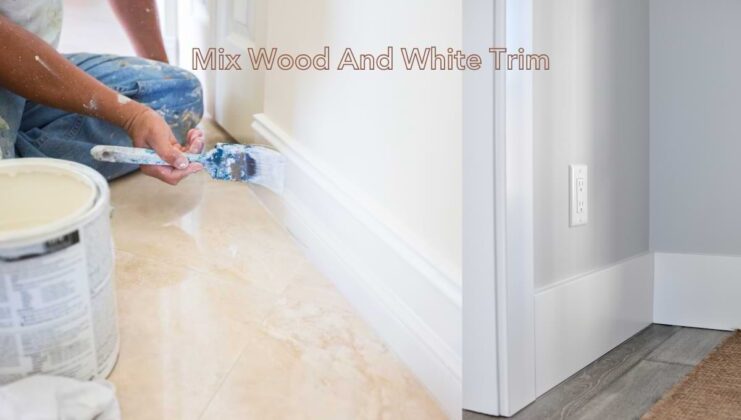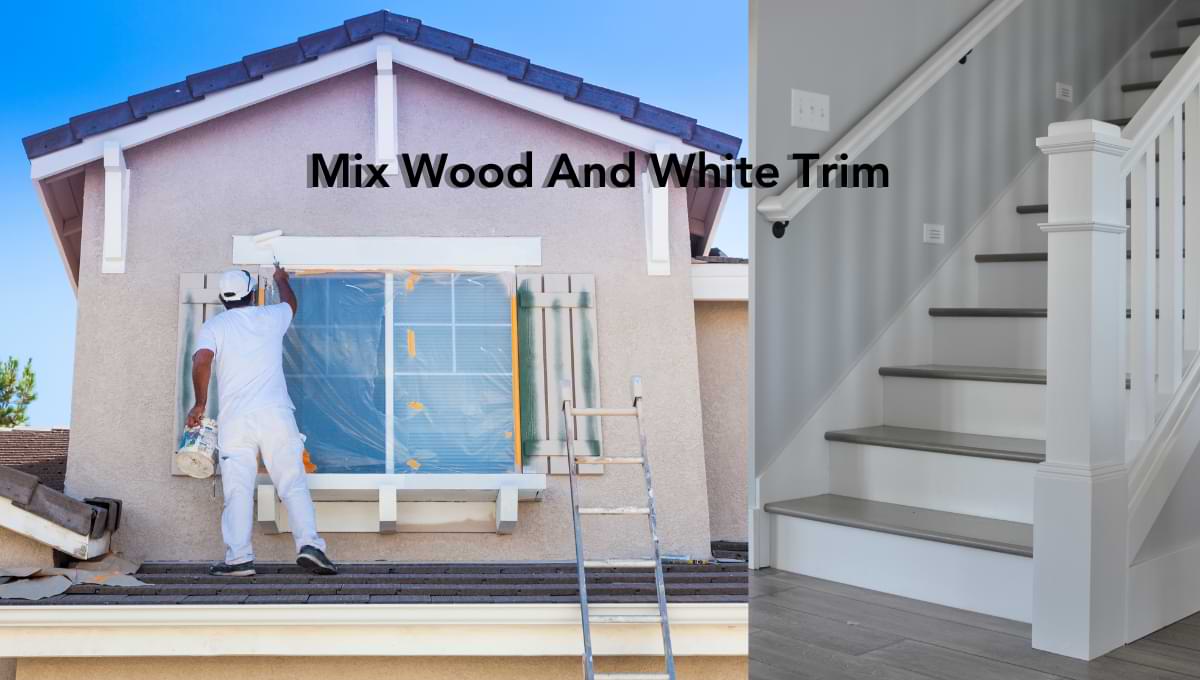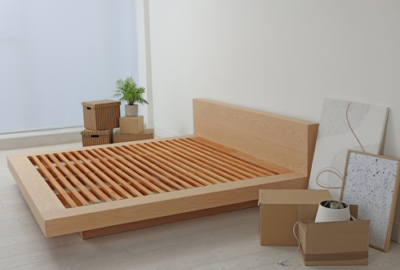The Ultimate Guide To Mix Wood And White Trim
If you want to add a touch of elegance and class to your home, you should consider using wood trim. While many different types of wood trim are available, white is the most popular. If you’re not sure how to mix wood and white trim, or if you want to learn more about this beautiful combination, read on for our ultimate guide.
Are you looking to spruce up your home’s trim with a touch of wood? Here is your ultimate guide to mixing wood and white trim. If you’re unsure how to do this, this guide will provide all the tips and tricks necessary to make your project successful. From sourcing the right pieces of mix wood and white trim to choosing the right paint or stain, we cover it all in this comprehensive guide. So whether you’re looking for a quick and easy project or want to create something classic and beautiful, our guide has everything you need!
What is wood trim, and why is it important?
It is a popular decorative element in homes across the U.S. you can use it to add character and style to a room, adding warmth and symmetry to an ensemble. It can also add functionality by hiding imperfections in the mix wood and white trim surface or providing a protective barrier against water damage.
Many types are available, each with its unique characteristics and benefits.
It can be a great way to update your home’s look and feel. However, knowing what to look for is important when deciding which one best suits your needs.
Why Choose a Specific Wood Trim Type?
Choosing the right type can make a huge difference in the feel of your home.
Here are some things to consider when selecting your trim:
- Width: If you’re using a narrow, the width will be important. You can cut down larger trim pieces to fit, but narrower ones may require custom installation.
- Length: If you’re using a tall, the length will also be important. Narrow trims will not usually work well above waist height, while taller ones may require extra length.
- End Material: Different types of end material offer different looks and textures. Mortised end material is great for creating a seamless look with others, while tongue and groove (T&G) offers more of a rustic look and is easier to repair.
- Texture: Whether you’re looking for a smooth finish or a more natural texture, there are many options. We recommend trying out different types to find the best look for your room.
Differences Between Woods and Trims:
When choosing the right type of trim for your home, there are a few things to consider. Woods come in many different types, styles, and colors, so it can be tough to decide which one is right for you.
Here are some key differences between woods and trims:
Woods: can be wood or a composite material made of other materials like plastic. It’s typically less expensive than white but may not last as long due to weathering and wear.
It’s typically less expensive than white but may not last as long due to weathering and wear.
Trims: White trim is usually made of plastic or other synthetic materials that resist weathering and fading. White is usually made of plastic or other synthetic materials that resist weathering and fading.
The right color for you might depend on your home’s interior decor, the style of furniture you have in your home, and what you want to achieve with it.
Choosing the Right Wood and Trim for Your Project

Choosing the right and for your project can be daunting. However, by following these simple tips, you can ensure that your finished product looks beautiful.
When choosing for your project, consider the type of finish you want. If you plan on painting or varnishing your project, choose a hardwood with a high oil density or even honeycomb grain. If you plan on leaving the unfinished, opt for a softer wood with a more diffuse grain.
When choosing for your project, consider the finish type you want. For example, it should be smooth to the touch and have a low luster so that it will not reflect light and look shiny in photographs or videotaping. Choose one that is non-reflective and has a textured finish to match the paint job for painted projects.
Tips for Choosing the Perfect Wood and Trim Combination
So many options are available, and it can be hard to decide what will look best in your home.
Here are some tips to help you choose the perfect combination:
- always consult a professional when choosing combinations – they will be able to recommend specific products and solutions that will look great in your home.
- Consider your home’s overall style – does a rustic, traditional look work better with vintage accents? Or is a modern, sleek aesthetic better suited to using newer materials like metal or glass?
- Think about how often you will use the room – if it’s mainly used for formal occasions, go for a more ornate trim, while if it’s primarily used as a living space, stick with something more simplified.
- how much are you willing to spend – you can find a lot of modern home decorations for as little as $20-$50.
- If you have a small budget, consider going with more of a country or rustic look.
- think about what you like – if you have a favorite decorating style, use it! If it’s too far from the style of your home, don’t worry. Just make sure that it works for you and your family.
- think about how much you want to spend – if you’re on a tight budget, think about DIY projects like replacing them or giving your walls a fresh coat of paint.
Traditional vs. Contemporary Trim
The traditional vs. contemporary trim debate can be confusing, so we’ve put together an easy guide to help you decide which is right for your home.
Traditional Trim: Traditionally, it was made up of a combination of wood and white. They would usually comprise most of them, with white used to finish it and give it a more finished look.
Nowadays, there are two main types of trim – wood and white – and each has advantages and disadvantages.
Wood Trim: this is great if you want a natural-looking finish on your walls or doors. It’s also affordable and easy to install, making it perfect for beginners. However, it is prone to damage and needs regular maintenance to keep it looking good.
Preparing Your Wood
When preparing your for trim, there are a few key steps you need to take to ensure that the finished product looks its best. First and foremost, remove any dirt, dust, or other debris before mixing them. Next, use a clean and dry brush to apply a light layer of primer to the surface. Finally, mix wood and white trim your color according to the manufacturer’s instructions and apply it using a brush or roller.
The Best Way To Apply Trim

When it comes to applying trim, there are a few different ways to go about it. Brushes, rollers, and airbrushes have their benefits and drawbacks, so choosing the best method is important.
Here’s a look at each option and how best to use them.
Brushes: Brushes are the most popular way to apply trim. Wet the bristles lightly to apply with a brush before painting them on the surface you want to. Then use gentle strokes to paint across the surface. Be sure to hold the brush closely against the surface, so you don’t end up with lines or splotches.
When mixing white, it is important to follow a few tips to avoid mistakes. For example, using a power tool, use the correct blade for the task. Additionally, always wear safety goggles and work gloves when mixing. Last but not least, make sure the surface you are working on is clean and free of dust and dirt before beginning.
Many people believe that you can’t mix wood and white trim the two when it comes to white. However, this is not always the case. There are several ways to mix oak and white without problems.
The first way is to use a light oak color and then use white paint or primer to cover it up. This will give you a nice look combined with the natural color.
Another option is to use dark oak for the trim and then paint it white.
This will create a more traditional look, but it won’t be as bright as if you used light oak instead. There is no definitive answer when it comes to whether or not you can have white wood doors.
First, ensure it is treated properly before painting or staining it – otherwise, the white paint may start to peel off. Secondly, use high-quality white paint that will hold up against the elements. And finally, be sure to seal the door and frame well after painting so that water doesn’t damage them over time.
Conclusion
Using wood trim to dress up your home’s exterior is a great way to add character and warmth. You can create a unique and timeless look by choosing the right white combination. So start rounding out your home’s exterior with the perfect white trim mix!






